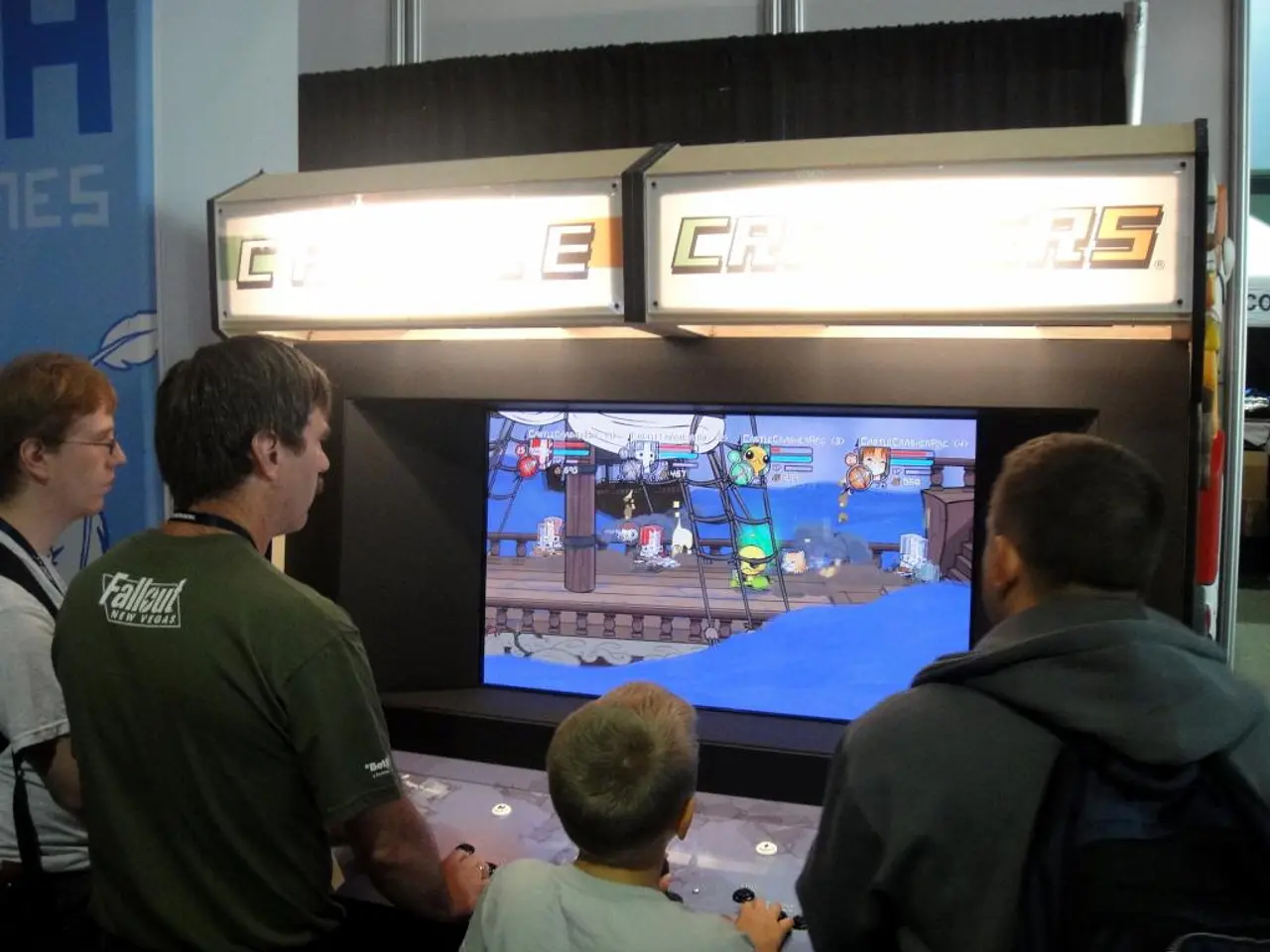Overview of Various Video Game Design Artworks: Categories and Approaches
=======================================================
In the realm of video game development, concept art plays a pivotal role in shaping the visual and interactive experiences that players encounter. From desolate wastelands to bustling cities, each game's world is brought to life through the creative vision of artists and designers.
A Post-Apocalyptic Journey: Fallout 3
The post-apocalyptic world of Fallout 3 is a testament to the power of concept art. Its depictions of desolate landscapes, captured in the game's concept art, form the backdrop to the game's rich narrative. These images evoke a sense of tension and mystery, immersing players in a world that is both familiar and alien.
Castles, Creatures, and Cities: A Journey Through Game Art
The concept art in games like Fire Emblem, Dark Souls, and Assassin's Creed draws players into worlds where every stone seems to tell a story. In Fire Emblem and Dark Souls, castles are depicted as imposing structures that stand as symbols of power and history. Meanwhile, in Assassin's Creed, cities are brought to life with stunning architecture and vibrant life, showcasing the artistry behind city designs.
In games like Sonic the Hedgehog and Subnautica, creature design plays a crucial role in character evolution. Sonic's design has evolved significantly over the years, reflecting the role of creature concept art in character development. Subnautica, on the other hand, creates serene and terrifying underwater environments, illustrating the dual nature of the underwater world.
Styles that Shape Worlds
Common styles used in game development include realism, stylized art, semi-realistic (stylized realism), cel shading, and abstract or surreal styles. Each style influences the game's visual direction by shaping the player's emotional experience, guiding gameplay, and defining the overall aesthetic identity.
Realism aims for highly detailed and lifelike visuals, suitable for genres like shooters and simulators where immersion in a believable world is crucial. Games like Skyrim and Need for Speed use this style to create immersive, believable worlds.
Stylized art uses exaggerated forms, simplified details, and unique artistic flourishes to create accessible, charming visuals. Examples include games like Fortnite and many platformers or RPGs.
Semi-realistic or stylized realism blends anatomical accuracy with artistic exaggeration, striking a balance between grounded visuals and artistic expression. Games like Final Fantasy and Street Fighter 6 showcase this style, allowing emotional character expression while maintaining credible proportions.
Cel shading mimics 2D cartoon styles with bold outlines and flat colors but in 3D environments, enhancing character readability and stylized motion. It creates playful, graphic-novel-like aesthetics seen in The Legend of Zelda: Wind Waker and Borderlands.
Abstract or surreal styles break traditional visual boundaries, often used to create otherworldly atmospheres or avant-garde experiences that impact storytelling and player psychology.
The Impact of Concept Art
These art styles directly impact the game's visual direction by establishing tone and atmosphere, guiding player navigation and focus, defining character personality and emotional engagement, and influencing technical considerations like budget, team size, and platform optimization.
Thus, the selection of concept art style is a foundational creative choice that aligns with the game's narrative goals, audience expectations, technical constraints, and genre conventions, shaping the entire visual and interactive player experience.
The Future of Game Art
From the terrifying demons of Doom to the utilitarian elegance of sidearms in Titanfall, concept art has the power to transform ordinary objects into legendary ones. In games like Starfield, the concept art reveals the game's ambition to explore the vastness of space and what lies beyond.
As technology advances, the possibilities for game art continue to expand. The next generation of games will no doubt push the boundaries of what is possible, creating worlds that are more immersive, more beautiful, and more engaging than ever before.
[1] Game Art Basics [2] The Importance of Concept Art in Game Development [3] Game Art Styles: Realism, Stylized Art, and More [4] Color Theory and Game Art
- The essence of lifestyle is reflected in the immersive experiences offered by video games, including their visual and interactive elements, primarily shaped by concept art.
- Fashion and beauty can be found in the intricate details of character designs in games like Fallout 3 and Assassin's Creed, where every element contributes to the overall aesthetic.
- Food and drink are sometimes integrated into games, adding an extra layer of realism, like in simulation games or narrative-driven adventures.
- Home and garden design finds its place in games like The Sims series, where players can create and customize their virtual living spaces.
- Gadgets and technology are prevalent in many games, showcasing the latest inventions and future advancements, such as in Deus Ex or Cyberpunk 2077.
- Artificial intelligence plays a significant role in game development, influencing the behavior and interactions of non-playable characters, like the enemy AI in games like Halo or The Last of Us.
- Relationships are often central to games, such as in life-simulation games or RPGs, where players form alliances, friendships, and romances.
- Travel plays a part in various games, whether exploring different countries in adventure games or visiting distant planets in sci-fi titles.
- Cars, trucks, and motorcycles are common modes of transport in games, showcasing real-life brands or futuristic designs, like in racing games or Grand Theft Auto.
- Books play a role in games through INT interactions, as game manuals, or hidden collectibles, like in The Legend of Zelda series or Red Dead Redemption.
- Shopping is integrated in games as a way to acquire items or customize characters, like in games set in shopping malls or luxury boutique settings.
- Social media is mimicked in games as a means of communication, character development, or story progression, such as in games that simulate popular social networking sites or messaging apps.
- Casino and gambling are incorporated into games for entertainment and winnings, like in games that include casino games or sports betting.
- Entertainment is a common theme in games, aimed at providing enjoyment through a wide range of activities, from watching virtual movies in games like Detroit: Become Human to attending live concerts in games like Rock Band.
- Sports games cover various sports, including football, soccer, basketball, baseball, hockey, golf, tennis, and more, offering realistic gameplay and simulation features.
- Weather and weather forecasting play a part in open-world games, influencing gameplay and storylines, like in games set in snowy environments or sandbox games with changing seasons.
- Mixed martial arts and other combat sports are integrated into games, such as in fighting games or sports simulations, allowing players to master various martial arts techniques.
- The gaming world continues to evolve with the rise of virtual reality and augmented reality, offering increasingly immersive experiences and blurring the lines between reality and fiction.
- In the future, games may incorporating emerging technologies, such as AI and machine learning, to create more interactive and responsive gameplay, elevating the gaming experience to new heights.




